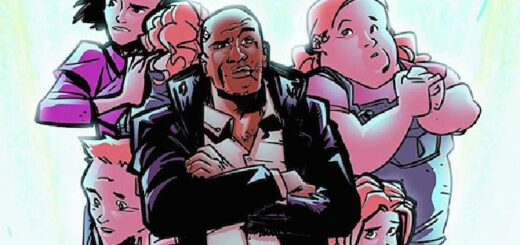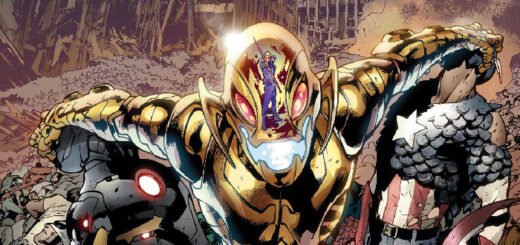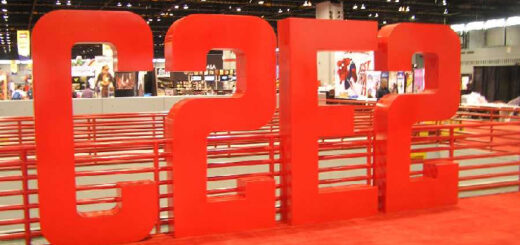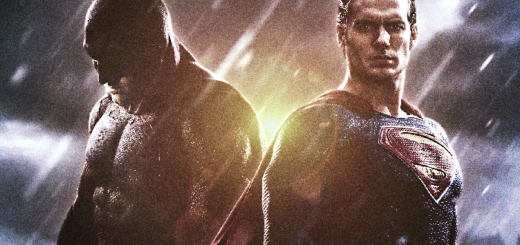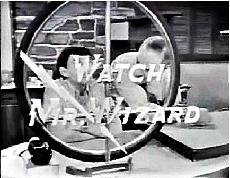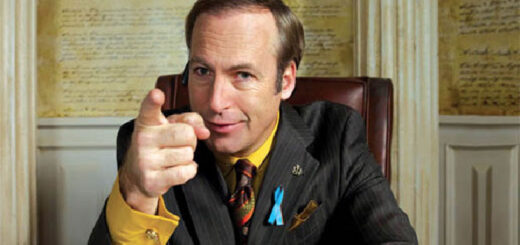Marc Alan Fishman: The Mystery of Mr. Rhee
The whole time I’ve been on the creator side of Artist Alley here in the midwest, the name Dirk Manning has been omnipresent. The ebony-coifed, Cthulu-befriending, ne’er-do-well of independent horror comic writing fame has long been a stalwart presence on the periphery of my own indie tunnel-vision. Finally, I decided to be more than a passing conversation and Facebook poker and converted myself into a paying customer. And with his first volume of Tales of Mr. Rhee sitting proudly over the potty where I watch my toddlin’ son enjoy bathtime, I’ve consumed the initial batch of madness. I am elated to post that I didn’t carve a single mystic rune into my skull whilst enjoying it.
The book itself is a hoot. A collection of web-comics presented in the standard printed comic format, the series straddles the line of the occult somewhere between the blue collar and the black robe. “Mr. Rhee” himself is a tough-as-nails savior of the damned in the same vein as folks like Constantine or Hellboy. He’s got spells and a bad attitude to keep him safe from demented and deranged demons. In all, the first volume covers bits and pieces of the titular thaumaturgy, from his humble and tragic origin to his current dangers regarding the dastardly demons that lurk in Mr. Rhee’s barely-kept-closed-closet. Say that three times fast.
Upon completing the trade, I was left in a bit of a stupor. The forward, by fellow midwestern writer “Uncle” Raf Nieves – which I oddly chose to read last – dealt entirely with the damn, I wish I’d thought of that feeling a creator might get reading somebody else’s work. While I had none of those feelings, I get entirely what was being communicated. It’s actually what drew me into making comic books in the first place. Mr. Rhee and the universe he occupies shares so much space with so many other occult/horror universes that it left me pondering mostly how talents like Mr. Manning, Nieves, and the rest all end up traveling down the same dichotomous road.
As mentioned above, Tales of Mr. Rhee lives on the line between the blue collar workaday world and the epically macabre. The evil and horrific worlds created in horror comics (and TV shows, movies, what-have-you) rely heavily on balancing the mundane with the insane. A Friday the 13th movie without the overnight camp set-up is simply never worth your time. And even when a story shuffles harder towards the blue collar – like Hellboy or Goon – there’s always a strong undercurrent of truly wicked things that anchor the story down. The balance is the key to the quality.
And for those seeking to dispel my thesis with Ghostbusters… go watch the boogyman episodes of The Real Ghostbusters and get slimed. But I digress.
The best scares – like the best laughs, or even action beats – come when you least expect it, and hit at issues underneath the surface. The best terror one might ever feel (aside from the kind you get when you sign your first mortgage) contains a large portion of plausibility, with the right dash of the impossible. A spider catching you off guard might make you jump. A spider that whispers to you that you’ve always been a failure is terrifying.
Tales of Mr. Rhee begins as an unassuming monster hunter rag. So true that it ultimately excels when the supernatural takes form as annoying neighbors, transitory spirits hanging at the bar, and even within the crevices of land purposely sold to a unassuming family to spare those in-the-know from the potential danger. The tales themselves are presented all without backstory, and finish as quickly as they start. As chapters tick off, the creeping crescendo of the final reveal ultimately provides the biggest scare of them all: We thought these tales were merely random short idiosyncratic occurrences, devoid of greater machinations. All-the-while, amidst his own decaying network of former associates, Mr. Rhee, unyielding bad-ass we thought him to be, is caught with nary an alacazam to mutter in the face of the evil that lurked underneath him the entire volume. Plausible, with that pinch of the impossible you say?
Chilling indeed.

